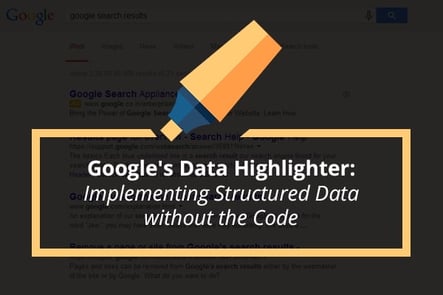Reaching the first page of Google isn't enough anymore. As your pages rise to the first page of Google, you still need to capture the eyes of the user. How can you influence a user to click on your page? The answer is to use structured data to generate rich snippets. Rich snippets are small pieces of information that appear in search results.
What is structured data and what does it do?
When search engine crawlers are crawling your site, structured data helps the crawlers to better understand your site. Essentially, structured data gives context to the numbers and words on your website. For example, a crawler crawls the words, “the creative momentum.” Unless you tell the crawlers that, “the creative momentum,” is the business name, the words are up for the crawlers to interpret. Structured data brings context to the information on your website. You can read more about structured data here.
What does Google do with the contextualized information that it receives? Google may decide to use the information to change the way your web page appears in the SERPs. For example, if you’re selling a 4-out-of-5 star product on your website; Google may add the product’s star ratings to the SERP. It may also add a photo to your article or influence your knowledge graph. What does this mean in terms of KPI’s? It means that more relevant searches will be served to users. As for the business owner, it can mean a higher average CTR. It also means a decrease in bounce rate since the webpage is more transparent on the SERP.
Any business that is serious about growing an online presence should make it a priority to wrap important information and fields with structured data. However, implementing structured data is not so easy. Implementing any type of structured data or schema requires that the you know HTML and/or JSON. Thankfully Google found a solution to implement structured data for the everyday user. Google has blessed the code-illiterate with the Google Data Highlighter tool.
What is the benefit of the Google Data Highlighter tool?
The main benefit of using the Google Data Highlighter tool is to affect how your web page is served for users. Rich snippets were designed to help the user experience. If you’re leveraging rich snippets, it should yield more clicks and higher average CTR. Apart from those benefits, the Google Data Highlighter tool benefits you in two more ways:
- No coding necessary: Google’s Data Highlighter tool was created to normalize rich snippets. Google always focuses on the searcher’s user experience first. The Data Highlighter allows you to reap the benefits of rich snippets without the need to learn code. Without the Data Highlighter, SERPs will be dominated by corporations who can afford developers and coders. Since Data Highlighter is free and easy to use, small businesses are given the opportunity to compete in the SERPs.
- Ability to mark up similar pages: Not only does Google make it easy to mark up web pages with structured data. Google also makes it easy for the user to mark up multiple pages that are similar to the original page. This benefits the user because it works like a template. All you have to do it highlight the data on one product page and apply the same highlights to the rest of the similar product pages. That means that hundreds of pages can be highlighted within minutes.
What’s the downfall of the Data Highlighter Tool?
Although the Google Data Highlighter tool is great, it isn’t perfect. I'm sure Google is working on ways to perfect the tool, however there are two things about the tool that bother me.
- Change of code breaks the tool: Anytime there is a change in the code, it breaks your highlight. Even if the code change isn’t in the <body> of the page, you’ll still have to re-highlight your pages when there’s a change. This can be time consuming in the early phases of development.
- Inaccurate predictions: When using the tool to highlight multiple similar pages, Google will try to guess what type of data needs to be highlighted. While accurate most of the time, Google gets it wrong sometimes.
What’s the conclusion?
Structured data generates rich snippets and as a result, can help drive traffic to your site. It is without a question that every business should implement structured data. Now you need to decide if Google’s data highlighter tool is right for your business or not. If you are code-illiterate, don’t have a developer on the team, or need a temporary fix until schema code can be placed on the site; then I recommend using the Data Highlighter tool to mark up your website. However, if your team has a developer that knows how to write out schema & JSON, then I recommend not using the Google Data Highlighter because any change of code will wipe away all of your efforts.
If you’re looking for experts to handle the structured data implementation on your website, then contact The Creative Momentum to talk with an expert to see how we can help drive more traffic and conversions to your website.


